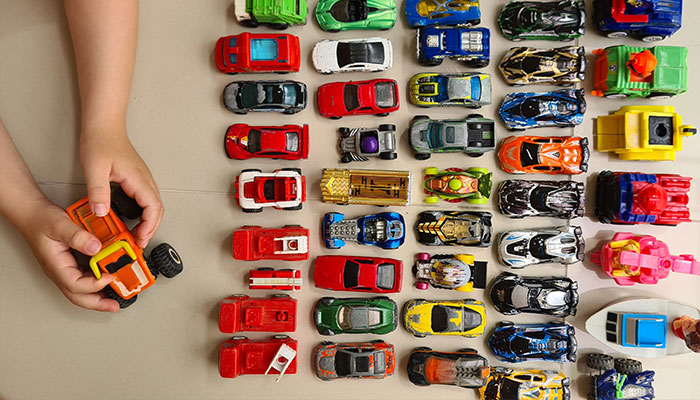While we believe that the books and resources recommended may be of value to you, keep in mind that these are suggestions only and you must do your own due diligence to determine whether the materials are appropriate and suitable for your use. PNC has no sponsorship or endorsement agreement with the authors or publishers of the materials listed.

TRANSPORTATION
Race Car Rally
Children will explore how vehicles move.

Lesson Objective
Using a variety of materials, children will explore how different textures impact the movement and speed of a vehicle with wheels.
Science
What You'll Need
- 4 thin pieces of wood or strong cardboard – 8” x 3’ to 5’ (to make ramps)
- Bubble wrap – 12” x 5’
- Aluminum foil – 12” x 5’
- Felt – 12” x 5’
- Masking tape – 2 rolls
- Variety of toys with and without wheels
What To Do
- Invite the children to play with the toys, some with and some without wheels. Discuss how they move and why.
- Ask the children if they have ever been in a car, how it moves, whether it moves fast or slow, and why. Explain that all cars have wheels that the car rides on. Ask the children if they can think of other vehicles that move on the road.
- Invite the children to feel and compare the different ramp materials. Encourage conversations describing how the materials feel.
- Set up a ramp with no covering on it and have the children experiment rolling the toys with wheels down the ramp.
- Ask questions as the children roll the different toys with wheels (see Guiding Student Inquiry).
- Have the children help you cover each of the other ramps with foil, felt, and bubble wrap.
- Encourage the children to make predictions about how each toy will roll down the felt covered ramp before they place the toy on it.
- Repeat the experiment using the same toys on the foil-covered ramp, and then the bubble wrap-covered ramp. Encourage the children to make predictions each time.
- Compare and contrast the different surfaces. Which one was fastest? Which one was slowest? Encourage the children to talk about why some surfaces are faster and others are slower (see Did You Know?).
Resources
Home School Resources
Home educators: use these printable lesson PDFs to teach this lesson to your home schoolers. They're available in English and Spanish.
Content Provided By
Common Core State Standards Initiative – These lessons are aligned with the Common Core State Standards ("CCSS"). The CCSS provide a consistent, clear understanding of the concepts and skills children are expected to learn and guide teachers to provide their students with opportunities to gain these important skills and foundational knowledge [1]. Visit the CCSS


